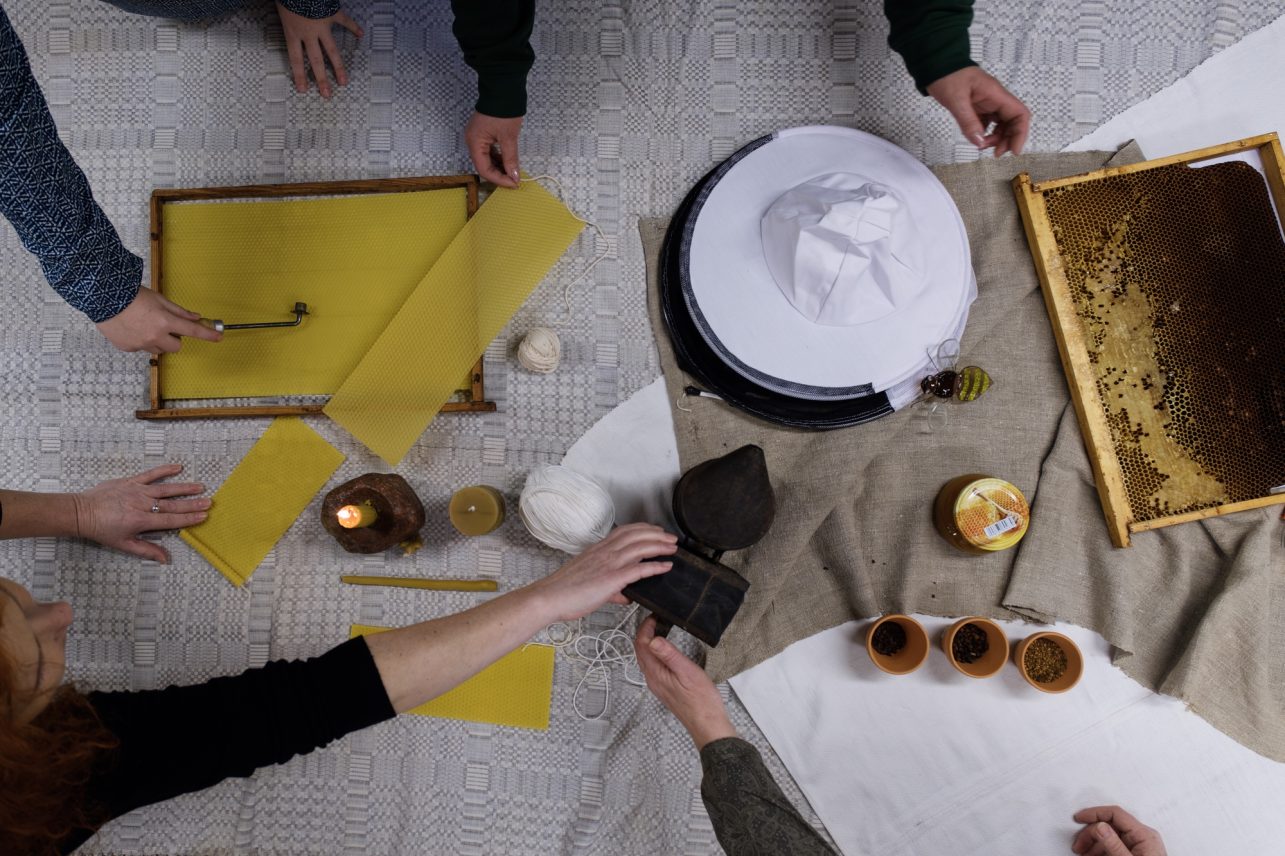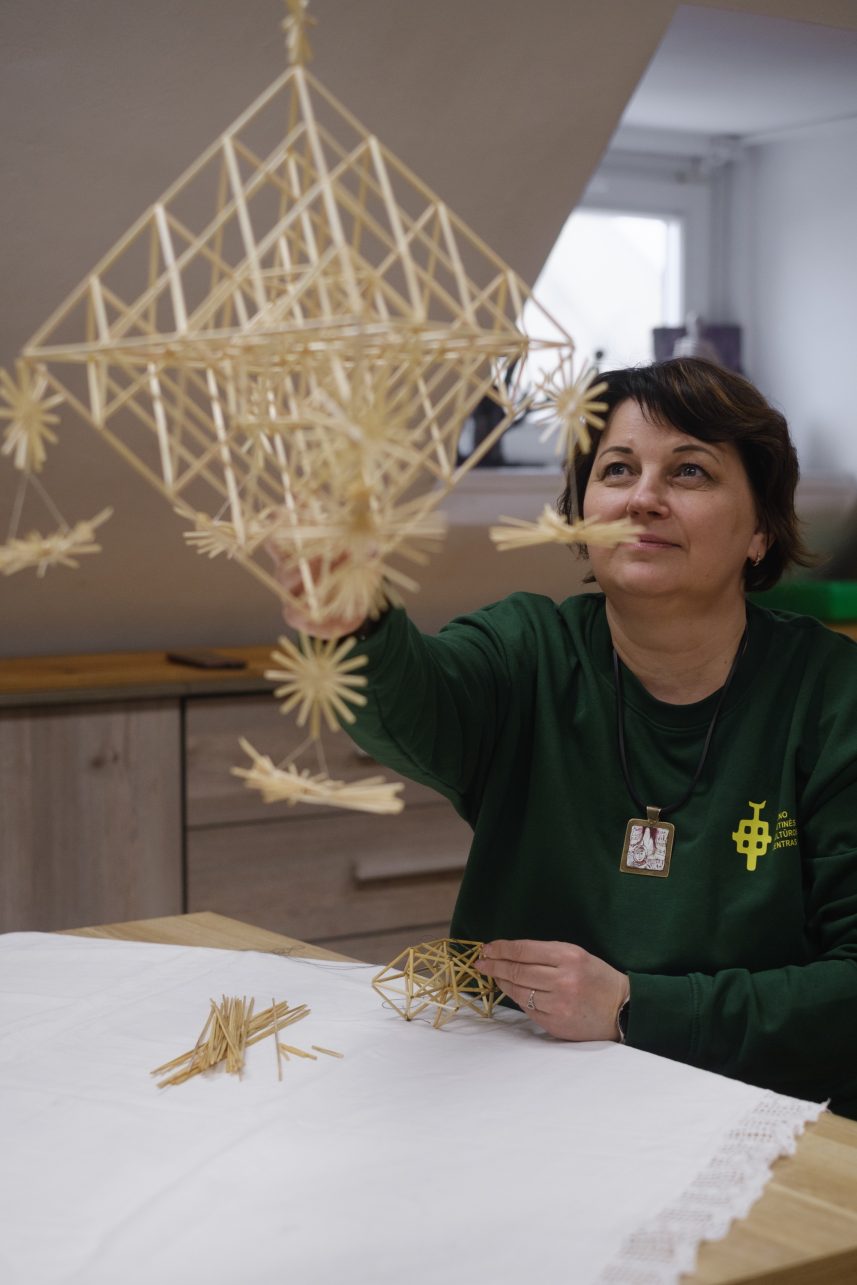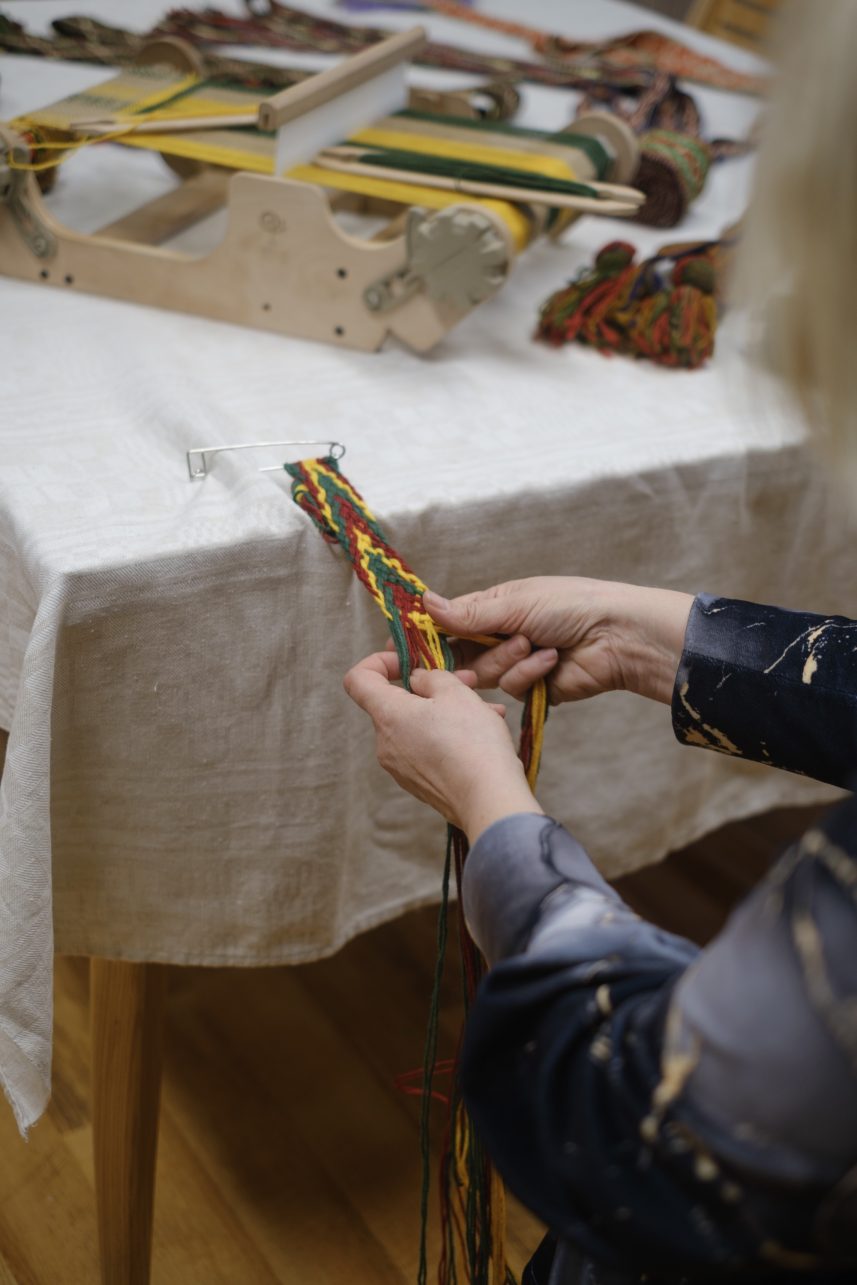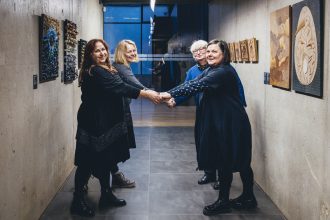Do you know how to decorate eggs with wax? For some, this Easter tradition is as natural as decorating the tree before Christmas, while others might not know how to hold the styling tool or that the eggs must be boiled first. Jurgita Kilikauskienė, an educator at the Kaunas National Culture Center, believes it is never too late to learn ancient crafts. Therefore, although this center is famous for its clubs and activities for children, the employees are happy to adapt all the educational activities to adults as well. If you want to celebrate this Easter more authentically, you still have time to prepare.


But let’s start from the beginning. When Jurgita offered to meet at Kalniečių St., I was surprised. I thought they taught ceramics, weaving, papercutting, etc., only in the Old Town, in the building located on A. Jakšto St. 18 (precisely where my colleague photographed the interviewee and her colleagues). It turns out that students do not need to go to the city center after school; folk art classes are held here as well (also in schools or workplaces: the place can be agreed upon). When I entered the several-stories-high building reminiscent of a public house, I was surprised to see handicrafts lined up, and in Jurgita’s office there were several spinning wheels, which, now performed only a decorative function.


My interviewee came to Kaunas from Tauragė district. She chose Vytautas Magnus University for her studies and after she graduated with a degree in ethnology (now a cultural studies program) Jurgita got a job at the Kaunas National Culture Center. And only then, as she jokes, she tested the theory she learned in practice. The specialist has been working here for the past 17 years. Although there was certainly a lot to choose from, and today she leads different workshops, Jurgita’s heart was always leaning toward straw mobiles. How so?
“I had to figure out what I could do. My colleagues were working with their specializations. So, little by little, I began to make straw mobiles, starting with very small and simple ones. I am still not as advanced as our most famous straw mobile makers, who can craft the biggest straw mobile in a day,” Jurgita smiles. She offers special classes during Easter for those, who want to decorate their homes with straw mobiles that might be small but made using their own hands.
According to her, this is delicate work. Patience, diligence, and precision are required, and spatial awareness is crucial. “When the group gathers, I immediately warn everyone that a couple of participants might fail in the making of straw mobile because not everyone has this ability despite the great desire. And there is plenty of that because, you know, straw mobiles are popular now,” the educator refers to the fact that at the end of 2023, this tradition was added to UNESCO Representative List of the Intangible Cultural Heritage of Humanity.
Among the choices of things to do at the National Culture Center, there is a traditional sash weaving class. Jurgita tells me about a group of music teachers who recently discovered their center; co-workers, employed in different kindergartens. They simply got interested in this craft and decided to diversify their free time. “At first they promised that there would be 10 of them but in the end, twice as many women came.” It is great when the teachers come because that means they will bring their students later. Some people who come know exactly what they want. Others call and say, “We would like to come, what could you offer us?” It is not uncommon for older people, who have learned something like this at school or from their grandmother, but no longer remember how everything is done exactly, to contact us.
I wonder if traditional crafts compete with, say, plans by a group of friends, co-workers, or former classmates to go bowling. Turns out they don’t. The National Culture Center in this case has fewer opportunities to compete because its workshops take place during normal working hours rather than evenings when adults have time for entertainment. Even during the day, one has to adjust their schedule to long-planned children’s extracurricular activities, so ‘tomorrow’ may not be possible. Although, for example, Jurgita remembers such inquiries as one of an older lady who decided to learn how to make straw mobiles with her grandchildren.
“In the past, we had classes open to anyone who wanted to attend and published the schedules publicly. Groups would form organically and there were few individual visitors. This is not the case now, but we aim to start inviting to an open workshop once a month in the evenings when it is convenient for working people.”
When asked if she notices an increasing interest in traditional crafts, Jurgita says that there has always been an interest, but the pandemic cut off the work. “Now we have to re-grow our audience, re-invite people. There was a staff change at the center, which also had an impact on that.”
Public festivities organized by the Kaunas National Culture Center, for example, Children’s Easter, Procession of the Three Kings, and international folklore festivals Baltų raštai and Atataria lamzdžiai enhance its popularity. During them, the center is also discovered by foreigners, some of whom also visit the educational activities. The particularly active Kaunas National Culture Center’s folklore ensemble Ratilėlis also helps to attract new people. We can again recall UNESCO. Its worldwide recognition also determines the attention of the local media to the tradition, and when more information appears, people start looking for ways to learn more about it on their own accord.
Kaunas National Culture Center is unique in the Lithuanian context because it is a non-formal education institution. Although there are more similar institutions in Lithuania that offer arts and crafts workshops, they are cultural institutions. Therefore, Kaunas National Culture Center will continue to pay the most attention to the youngest part of the audience and focus on extracurricular activities. However, if there is a mutual desire (the educators really want to!) and excitement you can organize a workshop with a group of friends, “We invite you and look forward to having you at our center; it’s great when adults are interested and visit us.”


If you are looking for a gift on the occasion of a public holiday, I must say that a candle, a papercut artwork, a straw bird, or a sash that you made yourself instead of buying it at a fair (and which was manufactured God-knows-where) will sure make the recipient happy. Especially since the Kaunas National Culture Center’s prices are very affordable and the educators will also provide the necessary materials. Most importantly, as I mentioned before, the educational activities don’t necessarily have to take place at the center.




